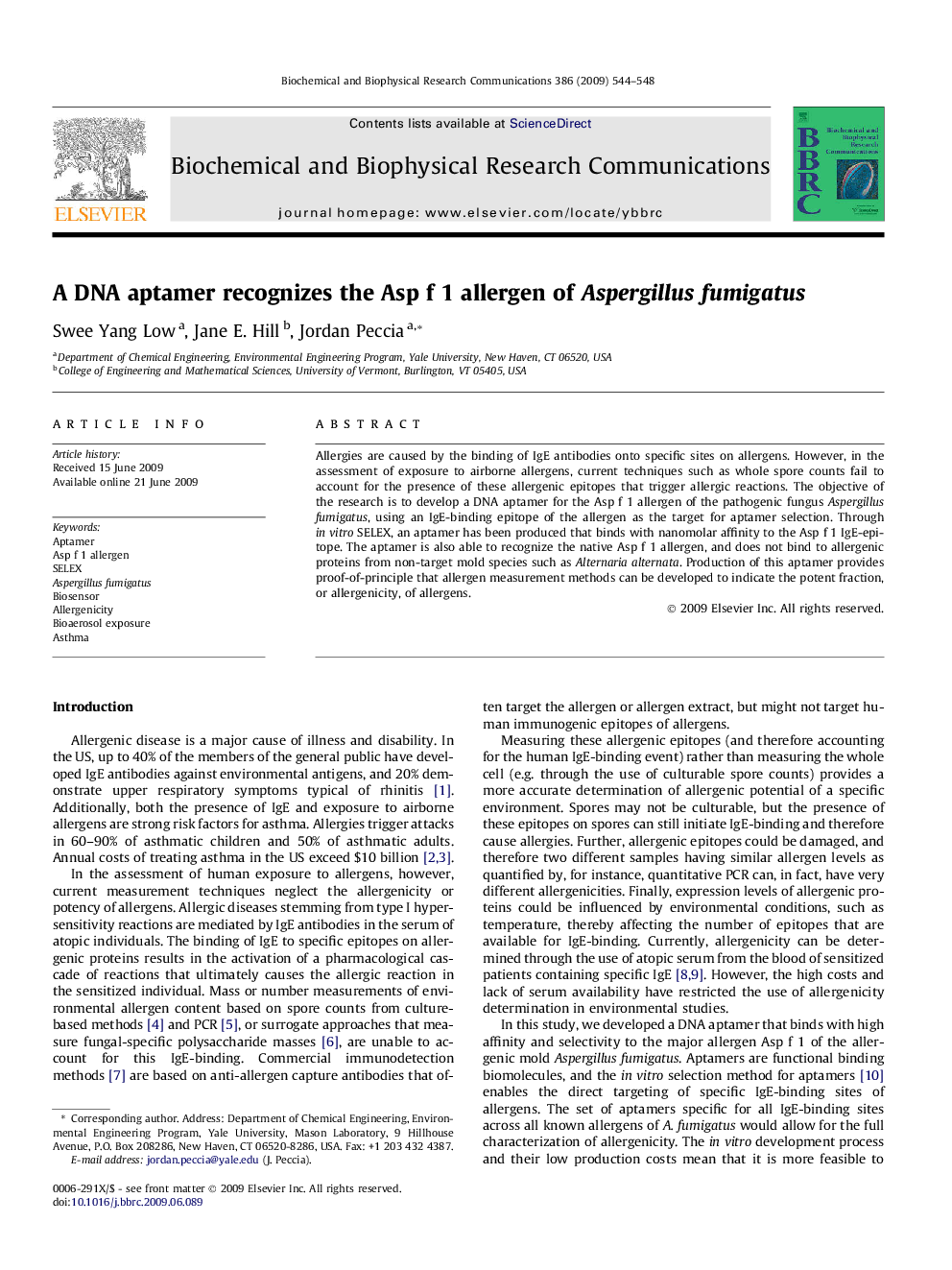| Article ID | Journal | Published Year | Pages | File Type |
|---|---|---|---|---|
| 1933383 | Biochemical and Biophysical Research Communications | 2009 | 5 Pages |
Allergies are caused by the binding of IgE antibodies onto specific sites on allergens. However, in the assessment of exposure to airborne allergens, current techniques such as whole spore counts fail to account for the presence of these allergenic epitopes that trigger allergic reactions. The objective of the research is to develop a DNA aptamer for the Asp f 1 allergen of the pathogenic fungus Aspergillus fumigatus, using an IgE-binding epitope of the allergen as the target for aptamer selection. Through in vitro SELEX, an aptamer has been produced that binds with nanomolar affinity to the Asp f 1 IgE-epitope. The aptamer is also able to recognize the native Asp f 1 allergen, and does not bind to allergenic proteins from non-target mold species such as Alternaria alternata. Production of this aptamer provides proof-of-principle that allergen measurement methods can be developed to indicate the potent fraction, or allergenicity, of allergens.
